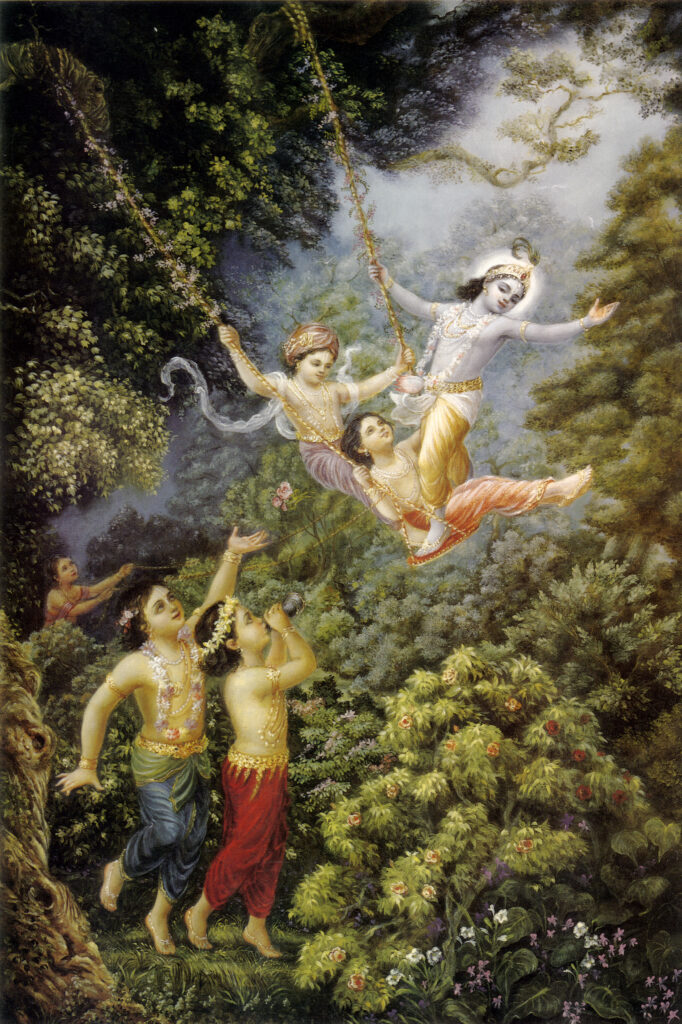One point that Srila Bhaktivinoda Thakura emphasizes in his teachings is the process of Sambandha, Abhidheya, and Prayojana. You probably heard these three terms.
Sambandha means the philosophical understanding we need to follow the spiritual process. To be able to chant with the proper mentality, for example, one needs to understand that Krsna is a person and that we have an eternal relationship with Him. If one thinks that God is impersonal, or that there are many Gods, or that we are all one, or that he himself is God, chanting the holy names inoffensively will be impossible.

Abhidheya is the process itself. What exactly does it mean to practice spiritual life? What rules and regulations should we follow, what kind of sadhana we should practice, and so on. Without understanding Abhidheya one may go for the wrong process, accepting Siddha-Pranali from some Sahajiya Babaji, for example.
Finally, there is Prayojana, which is the ultimate goal we aim to achieve. As Vaishnavas, we usually understand that the ultimate goal is to achieve love for Krsna and serve Him eternally in a personal relationship, but we can see that Mayavadis, as well as other groups, have different ideas. Many of the apasampradayas mentioned by Srila Bhaktivinoda Thakura in his works, such as the Ativadis, for example, had the understanding that they were serving Krsna with the ultimate goal of merging with Him. Sakhi-Bekis would often imagine they were serving one of the Gopis with the idea of ultimately merging with her, and so on. These are examples of wrong understandings of Prayojana.
One important point about Sambandha, Abhidheya, and Prayojana is that these are not three separate processes, but rather three essential components of our path back to Godhead, just like the three legs of a tripod. One has to simultaneously understand these three topics to successfully practice spiritual life. If one of the three points is misunderstood, one’s spiritual life can completely collapse.
Thanks to Srila Prabhupada’s books, we all usually have a basic understanding of Prayojana. We understand that the ultima goal is to cultivate a personal relationship of service to Krsna. However, we may have problems with the other two components.
If one doesn’t properly understand Sambandha, he may become a Sahajiya or even a Mayavadi, for example, without ever being able to properly understand what to do or what not to do. One may still see himself or herself as the center, instead of seeing Krsna as the center, and thus use spiritual life as a means to reinforce his ego, attract attention, attain some position in society, and so on. When Srila Prabhupada was initiating his first disciples, he used to ask them two questions: who are you, and who is Krsna? It’s difficult to underestimate the effect a deep understanding of these two basic questions can have in our lives. Even though we theoretically understand that Krsna is God and we are His servants, we may still have trouble applying this concept at a practical level.
Conversely, if one has problems in his understanding of Abhidheya, he will not be able to properly practice the spiritual process, and as a result, his advancement will be very slow. This can lead to frustration, giving one the impression that the process itself doesn’t work, since he or she has been practicing it for many years without achieving much real advancement. In other words, without a solid understanding of Abhidheya, we may be able to understand who we are and where we want to go, but we will become stuck, without being able to reach there.
This often led devotees to take shelter in cheap gurus, accepting so-called Siddha-Pranali from some sahajiya, for example, or starting to follow some Caste Goswami who just speaks some sugar-coated philosophy, making him believe that whatever he is doing is fine.
There is something called Siddha-Pranali in our line, but this can be revealed only by a truly liberated guru to a disciple who is already completely free from the influence of the three modes, and thus ready to start cultivating his eternal relationship with Krsna. The practice we often hear about, where a Sahajiya Babaji gives a piece of paper to a neophyte supposedly revealing his eternal form in exchange for a donation is just a mockery of the process. Just imagining one is a gopi or a peacock in Goloka will not help one to progress spiritually. This is one of many examples of incorrect application of Abhidheya.
Historically, this is one of the greatest problems Vaishnavas have been encountering throughout the centuries. People would go to Vrindavana with a desire to serve Krsna, but without a clear understanding would just fall victim to many misunderstandings and irregular practices. That’s one of the reasons Srila Bhaktivinoda Thakura, followed by Srila Bhaktisiddhanta Sarasvati Thakura and Srila Prabhupada had to come and do their preaching, fighting all these misconceptions. For many centuries, most of the Vaishnava literature that was available were books written by Sahajiyas, Caste Goswamis, Gauranga Nagaris, Ativadis, Bauls, and so on, that were systematically suffocating the sankirtan movement of Mahaprabhu. Only from the times of Bhaktivinoda Thakura, did the proper teachings start to surface again.
To find the right application of the different rules and regulations in spiritual life, reconciling different principles, is probably the most common challenge we face since the spiritual path is composed of many apparent contradictory principles and it’s hard for one to understand what is the right measurement for everything. Usually, only devotees who have a very serious understanding of the philosophy in Prabhupada’s books and good guidance from the spiritual master or other qualified seniors can avoid this problem and continue to progress at a steady pace. These are the ones who go back to Godhead at the end of their lives.
